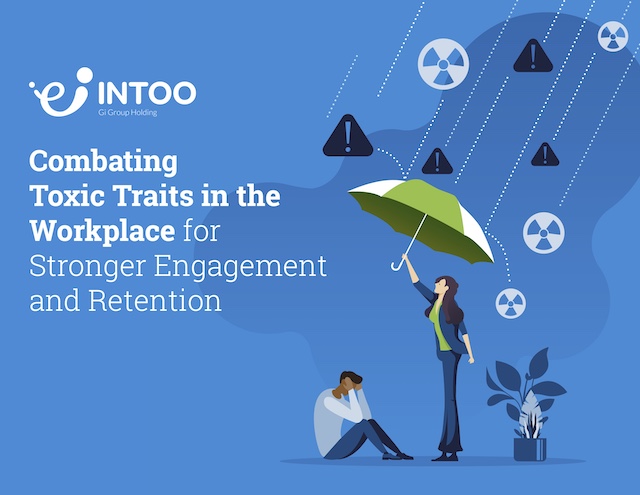A company is only as strong as its employees. For this reason it’s vital to have programs in place that help them grow as professionals. Learning and development (L&D) refers to the practices implemented by businesses to enhance the hard and soft skills of their team members, with the ultimate aim of boosting overall performance and productivity. Knowing how to incorporate meaningful L&D programs into your workplace can allow you to create teams and departments that are able to embody your organization’s values and help meet your goals. In this guide, we outline the main advantages and benefits of implementing strong L&D procedures and programs within your organization. We also explore the reasons why L&D is so vital to success in the modern working environment.
3 Benefits of Learning & Development in the Workplace
In today’s rapidly evolving business landscape, investing in learning and development programs has become a crucial strategy for organizations looking to stay competitive and foster the growth of their employees. Below we take a look at three key benefits of L&D.
1. Makes your business more attractive to potential employees
Many job seekers are looking for positions that promote self-growth and upward mobility within an organization. Offering L&D programs can help your company stand out as a desirable employer compared to businesses that don’t assist with professional development. Having these practices in place will also show potential applicants that the organization is concerned with the well-being of its employees.
2. Employee retention rates will improve
Equipping professionals with the skills they need to succeed can improve their morale and motivation in the workplace. The training you offer your professionals can also serve as an incentive to stay and grow within your company. Employees who are content with the treatment they receive from their employer are less likely to seek new positions outside their current organization.
 3. Helps bridge and fill skill gaps within your organization
3. Helps bridge and fill skill gaps within your organization
L&D programs play a vital role in bridging skill gaps within businesses. By offering targeted training in a range of skills—for example, leadership and communication training—these programs can provide employees with the necessary knowledge to upskill and better their day-to-day performance. In turn, this enables each employee to contribute more effectively to the organization’s overall success. As a result, L&D programs can create a culture of continuous learning, self-improvement and career development. As we touch on above, this additional employee empowerment can also contribute to higher retention rates and improved company morale.
Why Is Learning and Development Important for Employees?
Understanding the significance of learning and development for employees is vital for organizational success. Below we take a look at three key reasons this aspect of employment is so important to the future success of a business:
1. L&D drives professional growth for employees
Companies that offer learning and development programs can help their employees gain the skills they need to reach their career goals. The programs organizations provide can allow employees to acquire knowledge and experience faster than organically learning about an industry while on the job. Many businesses also provide position-specific training to employees who are interested in other roles at their companies, allowing them to progress and develop their careers within these organizations.
2. L&D increases employee productivity
L&D programs are there to enhance your workforce’s strengths and address their weaknesses. Employees who gain new skills or improve their current abilities through learning and development will become more productive in their departments. These programs can also assist professionals with learning new soft and hard skills that are relevant to their positions.
 3. L&D prepares team members for leadership roles
3. L&D prepares team members for leadership roles
Businesses that encourage internal advancement for their employees can use learning and development to train team members into the ideal leaders for their managerial roles. This is especially beneficial for professionals who actively seek these roles but do not yet possess the expected skill set for the positions.
How to Improve L&D in the Workplace
There are many ways to improve L&D opportunities in your organization. One way to do so is to offer rotational programs within various departments to provide employees with exposure to other functional areas within your organization. You can also facilitate a mentorship program between departments or simply set up “lunch and learns” to provide a basic overview of ‘X essential things to know’ about every department when a new employee starts.
Another way to strengthen your business’s L&D strategy is to implement career development programs. Coaching programs focused on leadership development, goal setting, onboarding and more can guide professional development on impactful soft skills that will advance and elevate your organization and its mission.
Learning and development is a fundamental pillar of organizational success in the modern working environment. By implementing strong L&D procedures and programs, businesses can reap numerous benefits that contribute to their overall growth and competitiveness. To find out how INTOO can help your business achieve its L&D goals, get in touch with our team today. INTOO’s coaches help employees in every stage of their career develop strategies to meet their goals, while employers reap the benefits of increased engagement, productivity, and retention. Learn more about how our career development programs can benefit your company.


 3. Helps bridge and fill skill gaps within your organization
3. Helps bridge and fill skill gaps within your organization 3. L&D prepares team members for leadership roles
3. L&D prepares team members for leadership roles








